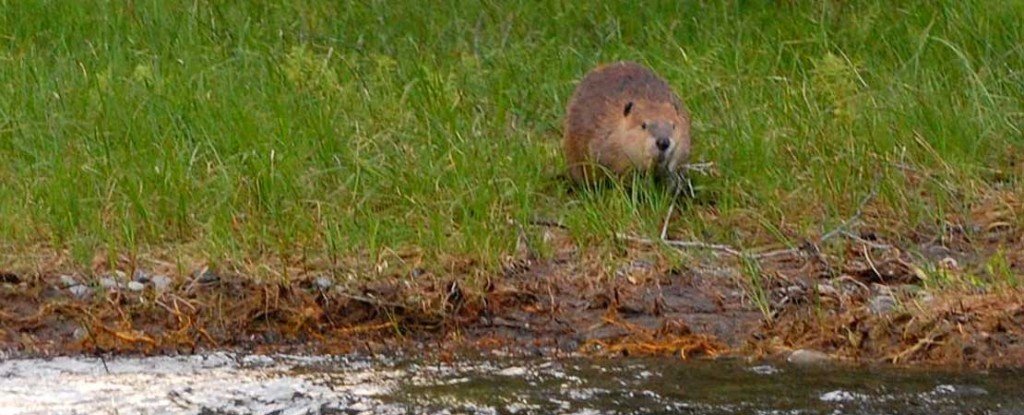Toughest Teeth in Town

The riparian bottomland habitat along the Snake River is home to a multitude of wildlife. One of the residents we often see is the beaver. There are two types of beaver in the world: the native North American beaver (Castor canadensis) and the Eurasian beaver (Castor fiber). Here in Grand Teton National Park, we often see beaver in the late evening. As our rafts glide by the river’s willowed banks, we can spot these charismatic animals sitting on the shore grooming themselves, gnawing away at tree branches, or splashing into the water at our approach. Pond-dwelling beavers build dams across small streams to create deep-water environments as protection from predators, and for ice-free food storage in winter. Along the swiftly flowing Snake, our bank-dwelling beaver can easily flee their clawed and toothed adversaries by diving into the deep channel or swimming to the opposite bank.
The beavers along the Snake fell Cottonwoods and Willows for food, just as their counterparts do alongside the beaver ponds. A beaver’s primary food source is the delicate layer of cambium between the inner bark and the wood. And since beavers can’t climb, down the tree goes. Just like pond-dwelling beaver, our Snake River bank beavers also use tree branches to build the domed home called a lodge. Pond beavers usually build in the middle of the pond for protection, while the bank beaver use the lodge to cover the den that they’ve excavated into the riverbank.
Beavers have evolved to become fantastic chewers, and can fell a 5-inch diameter tree in just over 30 minutes. In fact, their teeth never stop growing, and won’t wear away to nothing despite years of chewing hardwoods. The beaver’s teeth have orange enamel in the front and a soft dentin behind. The orange coloration is from iron, which makes the beaver’s teeth harder than those of many other animals. As the beaver chews, that softer dentin behind the orange enamel wears back more quickly than the enamel, leaving a razor sharp cutting edge.
Years ago, I had read that the growth rate of beaver teeth averaged about 6 inches a year. With Google at my fingertips, I attempted to verify the rate of growth and have spent hours searching fruitlessly. (I did find a source that claimed a growth rate of 4 feet a year but I find that hard to believe.) Finally, I found a paper about an Eurasian beaver that had been shot by a hunter in Norway. The particular beaver had a tooth out of alignment, which had led to abnormal unchecked growth. Scientists were able to study the animal and determined the growth rate of the tooth by correlating the length of the tooth to the age of the animal upon its death. The errant tooth was 13.5 centimeters long. Dividing the tooth length by the animal’s 35-month age gives a growth rate of .39 centimeters per month. That works out to 4.6 centimeters (or nearly two inches) a year. At this rate, if a beaver stopped chewing, these out-of-control chompers could grow to the point where feeding would be impossible.
So, when you see a beaver chopping down a tree, remember what he’s up to: eating, harvesting twigs for dams and lodges, creating protective wetlands, and working on a lifelong dental plan. Busy as a beaver indeed!

